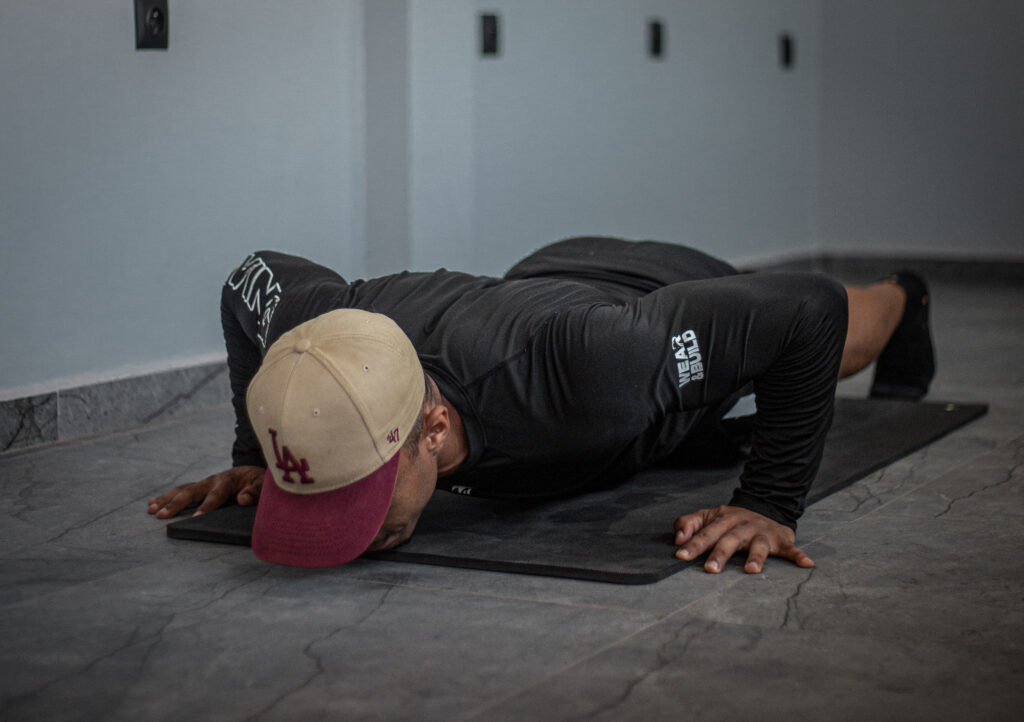Full body strength training is one of the most effective ways to build muscle, gain strength, and improve overall fitness. Unlike split routines, a full body workout plan trains every major muscle group in a single session, making it perfect for beginners and advanced lifters alike. Whether you’re following a 3-day full body routine at the gym or trying a beginner full body workout at home, this approach delivers consistent results when combined with progressive overload, smart recovery, and proper nutrition. In this guide, we break down everything you need to know about full body strength training, backed by science and practical gym experience.

Table of Contents
What is Full Body Strength Training?
Defining Full Body Strength Training
Full body strength training means targeting all major muscle groups—legs, chest, back, shoulders, and arms—within a single workout session. Unlike split routines that dedicate entire days to one body part, a full body plan spreads volume evenly across the week. This allows more frequent stimulation of muscles, which research shows improves strength gains and hypertrophy.
Benefits of a Full Body Workout Plan
Full body training offers clear advantages:
- Time efficiency: Training 2–3 times per week still covers the whole body.
- Balanced development: No neglected muscle groups.
- Fat loss support: Higher calorie burn per session.
- Injury prevention: Lower risk of overuse injuries compared to isolated split routines.
This makes it ideal for busy professionals, athletes, or anyone looking for sustainable progress.
Best Structure for a Full Body Workout Plan
How Many Days Per Week for Results?
Most lifters thrive on 2–4 sessions per week:
- 2 days: Perfect for beginners with limited time.
- 3 days: The sweet spot for muscle and strength gains.
- 4 days: Works for advanced lifters but requires careful recovery.
Beginners should start with 2–3 days, while experienced lifters may increase frequency as recovery improves.
Building a 3-Day Full Body Routine
A sample schedule:
- Monday: Strength focus (squats, bench, rows)
- Wednesday: Accessory and mobility (lunges, pull-ups, overhead press)
- Friday: Mixed power/hypertrophy (deadlift variations, dips, face pulls)
This allows optimal rest between sessions and fits the principle of progressive overload—gradually adding weight, reps, or sets to drive long-term results.
Best Compound Exercises for Strength and Muscle
Core Lifts Every Plan Should Include
The foundation of any program should be compound lifts, as they recruit multiple muscles at once:
- Squat – Leg and core powerhouse
- Deadlift – Full posterior chain activation
- Bench Press – Chest, shoulders, and triceps
- Pull-Ups/Chin-Ups – Upper back and biceps
- Overhead Press – Shoulders and triceps
These exercises maximize strength and efficiency, making them essential for a full body routine.
Accessory Movements for Balance
Supporting lifts help build weak points and prevent imbalances:
- Barbell Row / Dumbbell Row – Stronger back development
- Lunges – Leg stability and glute growth
- Dips – Upper body push power
- Face Pulls – Shoulder health
Accessory movements complement compound lifts and should be included based on goals.
Beginner Full Body Workout Routine

Simple Beginner Full Body Workout (Gym)
Here’s an 8-week progression-friendly gym plan:
- Squat: 3×8
- Bench Press: 3×8
- Barbell Row: 3×8
- Overhead Press: 3×10
- Pull-Ups (Assisted if needed): 3×max reps
- Plank Holds: 3×30–60s
Rest 90 seconds between sets, train 2–3 times weekly, and increase weight gradually.
Full Body Strength Training at Home
Don’t have access to a gym? A bodyweight strength training routine still works:
- Push-Ups: 3×12
- Squats: 3×15
- Glute Bridges: 3×12
- Pike Push-Ups: 3×10
- Planks: 3×max time
Add resistance bands or dumbbells for progression.
Full Body Strength Training for Men and Women
Full Body Workout Gym Male
Men often focus on upper body growth, but balance matters. A male-focused gym session may look like:
- Deadlift: 4×6
- Bench Press: 4×8
- Pull-Ups: 4×max reps
- Bulgarian Split Squat: 3×10
- Overhead Press: 3×10
Full Body Workout Gym Female
Strength training for women avoids the “toning” myth. Women benefit from higher volume for glutes and core:
- Squat: 4×8
- Hip Thrust: 4×10
- Romanian Deadlift: 3×12
- Dumbbell Bench Press: 3×10
- Plank Variations: 3×max time
For more female-focused advice, check out strength training for women beginners.
Free Full Body Workout Plans You Can Start Today
Full Body Workout Plan PDF (Downloadable)
Printable resources provide structured workouts. A free full body workout plan PDF usually includes:
- Warm-ups and cool-downs
- Compound-focused templates
- Progression charts
Tracking your workouts ensures steady progress and accountability.
Free Beginner Full Body Workout Plan (No Equipment)
A minimalist home version:
- Squats: 3×15
- Push-Ups: 3×10–12
- Inverted Rows (table/rail): 3×10
- Glute Bridge: 3×12
- Plank: 3×max time
Consistency is more important than equipment.
Advanced Strategies in Full Body Strength Training
Progressive Overload for Full Body Routines
The backbone of progress is overload. To keep gaining:
- Add 2.5–5 lbs weekly to major lifts
- Increase reps before increasing load
- Shorten rest intervals occasionally
Read more in our guide to progressive overload for beginners.
Common Strength Training Mistakes to Avoid
Avoid these errors:
- Skipping warm-ups
- Lifting too heavy too soon
- Neglecting sleep and nutrition
- Not tracking workouts
More on this in common strength training mistakes.
Recovery, Nutrition, and Lifestyle for Strength Training Success

Recovery and Rest in Full Body Workouts
Full body training requires proper recovery:
- Sleep: 7–9 hours nightly
- Active recovery: Walking, mobility drills
- Rest days: At least 1 between sessions
Detailed strategies are available in strength training recovery.
Nutrition and Fueling Strength Training
Key nutrition guidelines:
- Protein: 1.6–2.2 g/kg bodyweight
- Pre-workout: Carbs + protein
- Post-workout: Protein-rich meals
Supplements like creatine and whey protein can be useful but aren’t mandatory.
Conclusion: Key Takeaways for Full Body Strength Training
Full body strength training is one of the most practical and effective approaches to building muscle, boosting strength, and improving overall fitness. By focusing on compound lifts, adding progressive overload, and maintaining proper recovery, you’ll see long-term results. Beginners should start simple, while advanced lifters can push intensity with structured 3-day full body routines. Whether at home or in the gym, consistency is the deciding factor. Build smart, train hard, and fuel your body for lasting strength.
FAQs
Full body strength training at home – is it effective?
Yes. With push-ups, squats, and resistance bands, home-based full body workouts can build muscle and strength.
Where can I get a full body workout plan PDF?
Many fitness websites offer free downloads. Look for plans with compound exercises and progression tracking.
Is there a difference between full body workout gym male vs female?
The structure is the same, but women may emphasize glutes and core, while men often target upper body mass.
What’s the best full-body workout routine at home for beginners?
Start with squats, push-ups, rows, lunges, and planks, 2–3 times weekly. Add bands or dumbbells as you get stronger.
Is there a single exercise for the whole body?
Deadlifts are the closest, engaging nearly all muscle groups, but variety ensures complete development.
Visit my Instagram account for more
